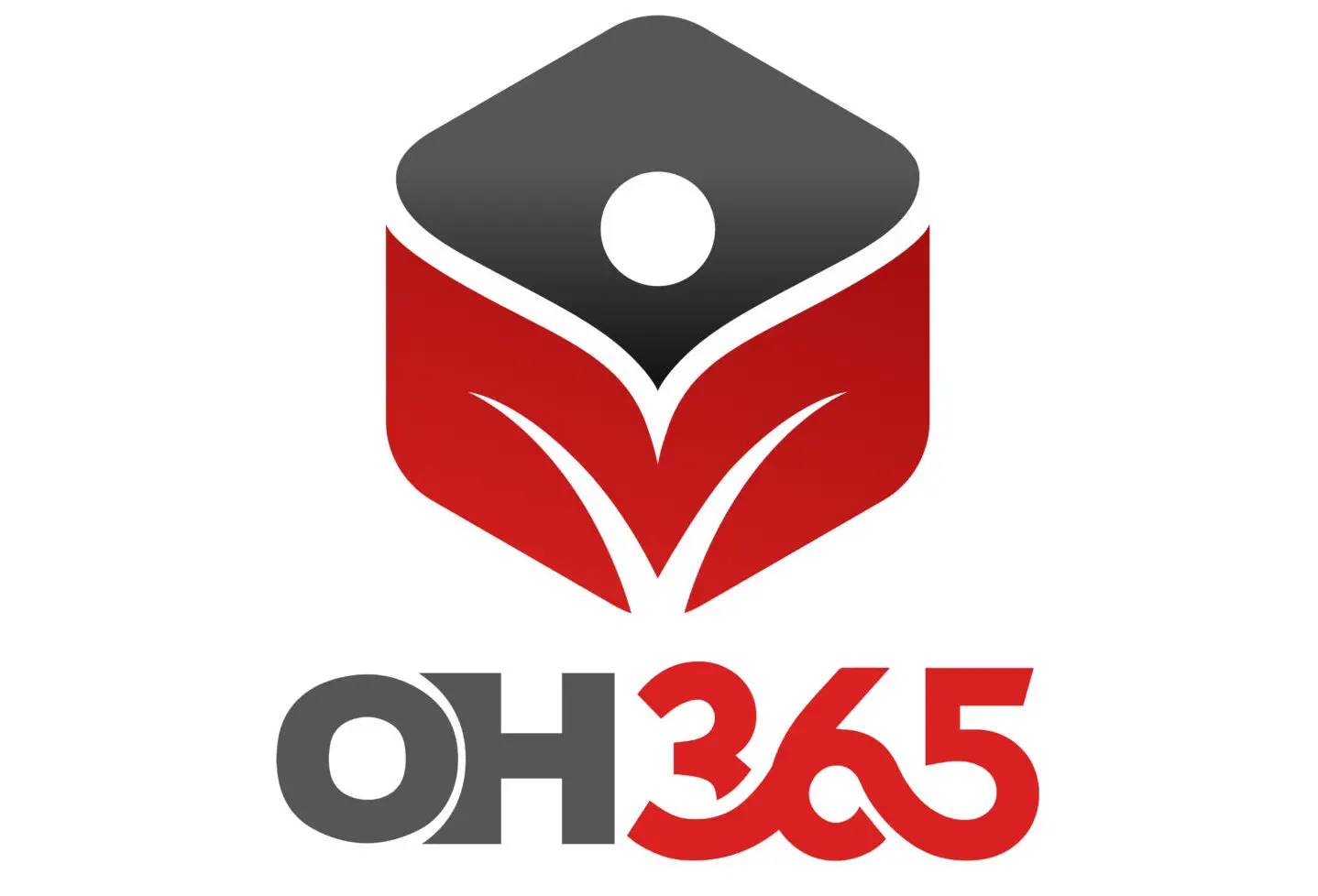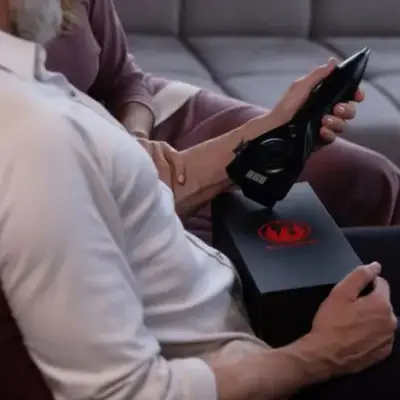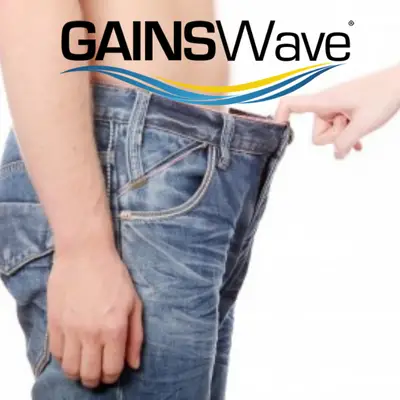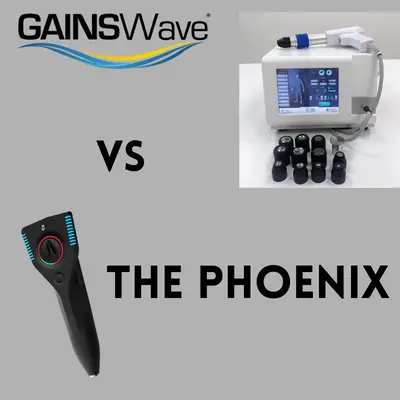Massage guns can be VERY helpful in treating shin splints, if used correctly. With the right gun and the right technique, you can make shin splint pain and long recovery times a thing of the past.
In this article, you can discover what shin splints are, proper techniques for treatment, and how to avoid them in the future.
How Can Massage Guns Help With Shin Splints?
With the proper application, a massage gun can be used to improve blood flow and release tension in strained muscles, tendons, and ligaments. With relaxation and improved circulation comes reduced pain and irritation, along with more resources for recovery.
Experts in therapy say that massage guns can decrease shin splint recovery times, with an added benefit of muscle stimulation and strengthening to reduce the chance of later episodes.
How Do I Know If I Have Shin Splints?
You’ll feel a deep, persistent pain in the muscles surrounding your shin. You may also experience some swelling.
With shin splints, these symptoms will not go away, even after you stop exercising. If you experience this, your best option is to seek out a health professional and have your condition assessed to be certain.
What Exactly Are Shin Splints?
Shin splints are indications of damage and irritation to the muscles, ligaments, and tendons in the lower leg. More specifically, those muscles that connect to the tibia, the large bone that forms the lower half of the leg.
Most often this damage is done by repetitive, heavy activity, known as repetitive trauma. Over time, repetitive trauma leads to tibial stress syndrome – aka. shin splints.
What Muscles Are Affected By Shin Splints?
There are four main muscles that are affected by shin splints:
- Tibialis anterior – The large muscle running on the outer front side of your leg, right next to the bone
- Tibialis posterior – A smaller, deep tissue muscle connecting under the knee and mostly surrounded by the soleus and flexors.
- Soleus – A muscle that wraps around the back and inner part of the upper ‘calf’.
- Flexor digitorum longus – A large muscle on the back inside of the lower leg, next to the Tibialis posterior, that connects above the inner side of the ankle bone.
What Causes Shin Splints to Occur?
The most common cause is overstraining in exercise. Any form of exercise that depends heavily on the lower legs can put you at risk for shin splints.
There are two main reasons that shin splints can occur. The first is poor posture or form, which can result in undue stress on your lower leg muscles. The second most common cause is overtraining. Pushing too far, too fast, can stress the muscles and joints to the point that normal healing cannot occur.
What Exercises Are the Most Likely to Result in Shin Splints?
The people who most commonly suffer from shin splints are runners. Incorrect running form, improper gear, or overexertion leads to severe muscle fatigue, which can quickly worsen into shin splints.
Weightlifters also tend to suffer from shin splints, due to the strain caused by various standing lift exercises. Too much extra weight at one time can push muscles, tendons, and ligaments too far.
Running and Weightlifting may be more likely to result in shin splints if done incorrectly, but any exercise involving repetitive lower body stress can also cause shin splints.
What Does The Massage Gun Do To Help Shin Splints?
When used correctly, the steady oscillating pressure of the massage gun helps the muscles relax and loosen up. It also encourages increased circulation. The stimulation provided by the massage gun helps revitalize the tissue. This reduces the effects of muscle fatigue and allows more resources for healing.
To read more about the pros and cons of a massage gun click here.
How Do I Use the Massage Gun to Help Shin Splints?
It depends on the type of shin splint you have. There are two different types of shin splints, and each type needs a different set of muscles relaxed and stimulated for the best effect.
According to Dr. Justin Lin, a massage gun works best if you apply it only to certain muscles in a specific pattern. His recommendation is to relax muscles by massaging from the ‘origin point’, to the ‘insertion point’, and stimulate the muscle by using the massage gun in the opposite direction.
All four of the muscles affected by shin splints have their origin point in the upper area of the tibia, and their insertion point around the ankle bone. For a more exact understanding of where each muscle attaches, it may help you to consult a medical reference that depicts these muscles visually.
What Muscles Do I Stimulate and Release to Help My Shin Splints?
For posterior shin splints, it’s recommended that you relax the posterior tibialis and stimulate the soleus. So you want to massage in a downward path in the back of your knee, then upward around the back-inside area of your calf.
For anterior shin splints, Dr. Lin recommends relaxing the posterior tibialis and the extensor digitorum longus. Essentially, you would massage in a downward path on the back of your leg, then downward on the outer frontward side of your leg.
It can help to have a licensed therapist guide you through this process if you’ve never used a massage gun, or don’t have much experience dealing with shin splints.
How Do I Know What Kind of Shin Splints I Have?
According to muscle therapists, posterior shin splints cause pain in the inner and lower parts of the calf. Anterior shin splints will present with pain in the upper and outer parts of the calf. It is possible to have both types of shin splints at the same time. If you are experiencing pain in both locations, talk to your physician to be sure.
Does Using a Massage Gun Fix Shin Splints?
Massage guns can help, but they won’t cure shin splints. Full healing requires rest, and time for the damaged areas to heal. The best a massage gun can do is make your recovery time shorter and less painful.
Are massage guns harmful? Click here to learn more.
Can I Use a Massage Gun To Prevent Shin Splints?
Some massage gun and exercise experts say that you can. According to massage gun suppliers like Zarifa, the massage gun can be used to provide a more in-depth warm-up than traditional stretches alone. Use of a massage gun before heavy work-outs helps warm the muscles and provides greater blood flow at the outset, reducing the impact of muscle fatigue.
Manufacturers also say the relaxing properties of massage gun use can help increase the range of movement, which can reduce irritation caused by overstretching.
What is the Best Type of Massage Gun For Me to Use?
Rehabilitation experts recommend starting with a softer head if you’re not experienced with a massage gun, or getting a massage. While massage guns are designed to avoid causing pain, they can be uncomfortable the first few times you use them.
If you’ve been diagnosed with shin splints and are considering a massage gun for home use, it might be beneficial to ask for recommendations from an expert.
To learn more about the various massage gun attachments click here.
References
www.muscletherapyaustralia.com.
www.rehabandrevive.com
www.zarifausa.com/blogs/products/massage-gun-for-shin-splints





3 responses to “Can Massage Guns Help With Shin Splints?”
[…] a good investment. They are safe for everyday use, and much more affordable than daily massages! A massage gun can be used on yourself or someone else, and it will make a great gift for virtually anyone you […]
[…] the massage gun on before you put it on the muscle. This is important to maintain control over the […]
[…] we suggest that if you have any major blood clots, don’t use a massage gun without consulting your physician first. Your doctor will always know what is best for your body […]